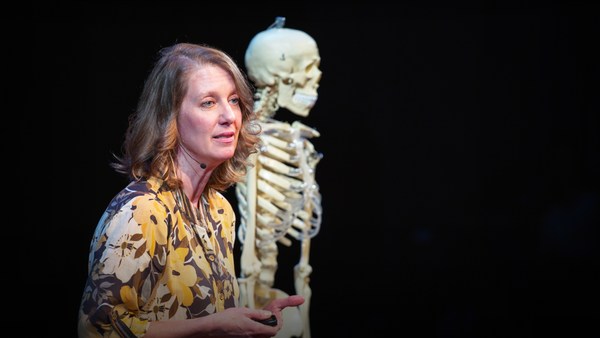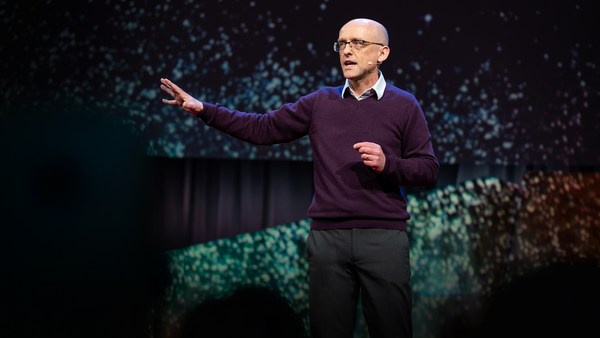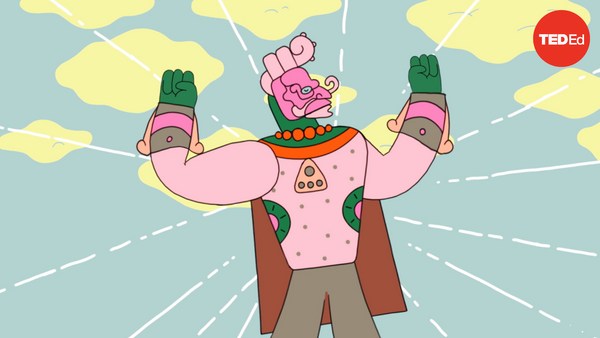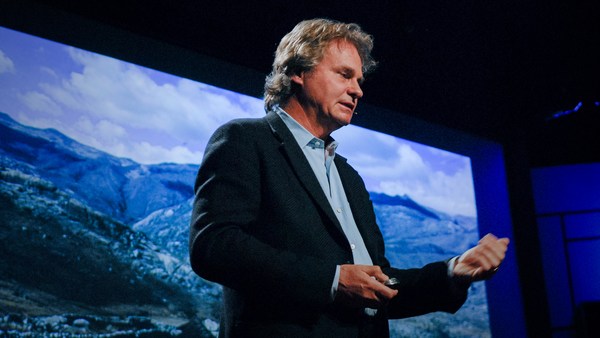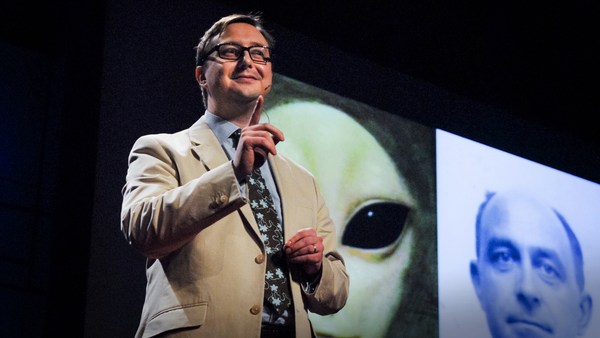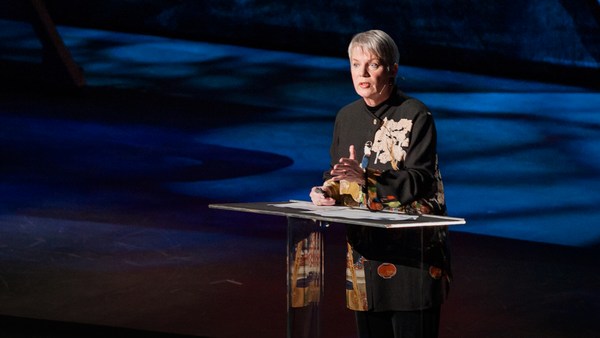A few years ago, a stranger sitting next to me on a plane, asked what I did for a living. I told him that I'm an archeologist and I study the ancient Maya. He said, "Wow, I love archeology," and told me how excited he gets when hearing about new finds. Then he told me how amazing it is that aliens from the planet Nibiru had come to Earth and established the ancient Sumerian culture in Mesopotamia. I have these conversations a lot on planes, in bookstores and in bars. People want to talk with me about pseudoarcheology, something that seems like archeology, but isn't. It involves making wild and unproven claims about the human past, things like aliens built the pyramids or survivors from the lost continent of Atlantis invented hieroglyphic writing.
Now, most of us know that claims like these are unfounded and frankly absurd. Yet they're everywhere. They're on TV shows, in movies and in books. Think of the History Channel series "Ancient Aliens," currently in its 15th season, or of the most recent Indiana Jones movie about the Kingdom of the Crystal Skull, or Erich von Däniken’s classic book “Chariots of the Gods?” Here's the crucial question. Who cares? It's just entertainment, right? Isn't it a nice escape from reality and a fun way to think about the world? It's not. Most pseudoarcheology is racist and xenophobic and like other forms of entertainment, it influences our culture in real ways. Let me give you an example.
It's common to hear pseudoarcheologists claim that groups like the ancient Egyptians or the ancient Maya accomplished incredible things, but only with the help of outside groups, like aliens or people from Atlantis. What you rarely hear is pseudoarcheologists claiming that, say, Romans had help building the Colosseum or that Greeks had help building the Parthenon. Why is that? For pseudoarcheologists Europeans could have accomplished their feats on their own, but non-Europeans must have had outside guidance. Claims like these are not just outrageous. They are offensive. Here and in so many other instances, pseudoarcheology sustains myths of white supremacy, disparages non-Europeans and discredits their ancestors' achievements.
I've spent the last 12 summers doing archeological fieldwork in the Maya area. Several years back, I was staying in a small village along the Belize–Guatemala border. I spent day after day in the lab, staring at tiny, brown, eroded pieces of ceramics. The Maya man who lived across the street made slate carvings to sell to tourists. He'd stop by every once in a while to chat. And one day he brought over a slate carving, and it was this image. The image carved into the sarcophagus lid of the Maya king Pakal around his death in 683 AD. This image is incredible and it's complex. It shows the deceased king rising from the jaws of the underworld to be reborn as a deity. In the center is a stylized world tree that extends from the underworld through the realm of the living into the upper world. Around the edges is a sky band with symbols for the sun, moon and stars.
I was so excited to talk with my neighbor about ancient Maya religion, cosmology and iconography. Instead, he wanted to talk about an "Ancient Aliens" episode he had seen. The one about the Maya. And he told me that this image was of an astronaut at the controls of a rocket ship. I was shocked. Instead of marveling at his own ancestors, he was in awe of a fictional alien. He even told me that one day, he hoped to give this carving to Erich von Däniken, father of the ancient aliens phenomenon.
Pseudoarcheology undoubtedly harms its subjects, often Indigenous people, like the Maya, but it also harms its viewers. It harms all of us. Like other forms of racism, it exacerbates inequality and prevents us from appreciating and benefiting from human diversity.
What's really scary is that pseudoarcheology is a small part of a much bigger problem. It's just one example of people getting history wrong on purpose, of people knowingly changing historical and archeological facts. Why would anybody do that? Often, the past is knowingly changed either to justify racism in the present or to present a nicer version of history, a version of history that we can all take pride in.
Six years ago, Jefferson County, Colorado became a battleground over how to teach American history to high school students. The Advanced Placement curriculum had been expanded to include things like the removal of Native Americans to reservations and the rise of extreme economic inequality. Members of the local school board were upset. They vigorously protested the changes, arguing that the new curriculum didn't do enough to promote capitalism or American exceptionalism.
Right now we are in the midst of a heated debate over public monuments to controversial figures. People like Robert E. Lee and Christopher Columbus. Should these monuments be left as they are, destroyed or put in museums and what should happen to the protestors who deface these monuments? Should they be praised for helping debunk myths of white supremacy? Or should they be punished for vigilantism and lawlessness? What do we make of scenes like this?
For me, debates about history curricula and public monuments suggest similar messages. First, the past is political. What we choose to remember and forget relates directly to current political concerns. Second, we need to consider who presents the past, who chooses the content of history textbooks and the subject matter of public monuments. Imagine how our understanding of history might be different if it was told by the marginalized, rather than the powerful. We can help combat racism and xenophobia today by changing how we think about the past. Archeologists need to do two things. First, we need to make our discipline more inclusive. We need to work with and for the descendants of the people we study.
Richard Leventhal's work at Tihosuco, Mexico is groundbreaking, pun intended. For over a century, foreign archeologists have traveled to the Maya area to excavate the things they thought were interesting. Mostly temples and pyramids. Leventhal took a different approach. Instead he asks the contemporary Maya of Tihosuco what they thought was interesting, and it turns out they didn't particularly care about temples or pyramids. They were interested in the Caste War, a major but understudied colonial period Maya rebellion.
Second, we need to make archeology more accessible. The last time I walked into a bookstore, I asked where I could find the archeology books. The clerk took me to a section labeled "Ancient Mysteries and Lost Knowledge." It had books with titles like "Extraplanetary Experiences." And what is absolutely absurd about this is that real archeology, archeology based in scientific facts and historical context, is fascinating. You don't need aliens to make it interesting. It's up to us archeologists to find new ways to share our work with the public.
And this used to be the norm. In the 1950s, there was a game show on CBS called "What in the World?" The host would present an object, an artifact, and the archeologist contestants would try to figure out what this thing was and where it was from. The show was funny and interesting and exposed viewers to the diversity of human cultures.
Beginning in the mid-to-late 1960s, archeology changed focus. Instead of concentrating on public engagement, archeologists began working together to professionalize the discipline. On the plus side, we now have things like Bayesian analysis of radiocarbon dates and theoretical approaches, like the new materialisms. But in the process, archeology left the public behind. Shows like “What in the World?” became less common and pseudoarcheology emerged to fill the void.
But we can all contribute to changing how we think about the past. When you see a pseudoarcheological claim, be skeptical and know that if you post about Atlantis, tweet about ancient aliens or forward a clip from a pseudoarcheology TV show, even if it's not your intention, you may be promoting racism and xenophobia. Also know that the past is alive. It is political, it is ever-changing and it influences our daily lives in meaningful ways. So the next time that you watch the History Channel, read an archeology book or view a public monument, remember that every statement about the past is a powerful statement about the present.
Thank you.
